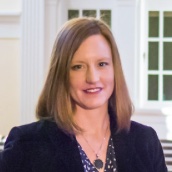by Monica Schaap Pierce
“You don’t know Mary Oliver?” a friend asked earnestly. “You must remedy that,” she continued, “You’d love her work.”
Perhaps it was the tone of her voice—which hinted that I was missing out on something requisite for profound living—or the yearning within me for a genre vastly different from my academic reading. Whatever it was that stirred my curiosity, upon returning home, I promptly downloaded an e-book of Mary Oliver’s poems.
One of the first I read was “Her Grave” in Dog Songs. Oliver’s piercing descriptions of the physical stature and demeanor of her dog lit my imagination afire. I became her companion on a journey, which moved from an intimate reflection on her relationship with her canine companion to a more detached observation of the animal “other”—the “bear wandering in the autumn up the side of the hill,” the “water snake with his backbone of diamonds,” and the dog’s “dark body” being buried in the woods.
Months later, I encountered one of Oliver’s more well-known poems, “Wild Geese.” Like “Her Grave,” “Wild Geese” lays bare the human relationship to the animal world:
“You do not have to be good. / You do not have to walk on your knees / for a hundred miles through the desert, repenting. / You only have to let the soft animal of your body / love what it loves. / Tell me about despair, yours, and I will tell you mine. / Meanwhile the world goes on. / Meanwhile the sun and the clear pebbles of the rain / are moving across the landscapes, / over the prairies and the deep trees, / the mountains and the rivers. / Meanwhile the wild geese, high in the clean blue air, / are heading home again. / Whoever you are, no matter how lonely, / the world offers itself to your imagination, / calls to you like the wild geese, harsh and exciting— / over and over announcing your place / in the family of things.” Mary Oliver, “Wild Geese,” in Dream Work (New York: Atlantic Monthly Press, 1986), 14}
Beginning with the human experience, Oliver assures her reader, “You do not have to be good.” I got stuck on that line for a while. My impulse is to object: of course, I have to be good! (In my resistance to Oliver’s claim that we don’t need to be good, I was reminded of Jesus’s insistence that no one but God is good, Mark 10:18, Luke. 18:19). But, then, I wonder, what about when we’re not good? What do we do with that? We don’t need to drag ourselves through a desert repenting, Oliver suggests. After all, I could drag myself through a thousand deserts on my knees and still not atone for my sins. “You only have to let the soft animal of your body love what it loves.” With that phrase—“the soft animal of your body”—the poet proffers grace; with it, she also uncovers the animal nature of the human. We are animals, she urges her readers, and it is precisely that “soft animal” within us that knows how to love.
From that line onward, Oliver’s verse decenters the human self, summoning us to imagine ourselves as intimately connected to the more-than-human world. The human experience of despair is situated within the vast cosmos—“meanwhile the world goes on.” And the reader is invited to turn his gaze overhead, to regard the wild geese honking, “announcing your place in the family of things.” “Your place”—even in your despair, in your brokenness, and in your love—is in the cosmic “family of things,” Oliver reminds us.
We are animals, we are wild. We are part of a variegated, harsh, but also breath-taking, interconnected world. Although we often forget our animal nature, it is not difficult to draw connections between human experience and the non-human world. Consider, for example, some of the most meaningful moments of human life: birth, sex, eating a meal with friends or family, witnessing a death. These activities—often associated with being the most spiritual—are also the most embodied, material, animalistic. They bring the “soft animals” of our bodies to the surface.
After a long, difficult labor that resulted in the birth of my child, I took a few minutes to reflect on the process with my husband, who had been by my side through it all. Astounded by the carnality and profundity of the experience, he exclaimed, “All I know is that we are animals!” Indeed, such moments—embodied and transcendent, chaotic yet ordered by nature—remind us that we too are animals. Our place is within—not outside of—the whole earthly family.
This morning, I discovered in my inbox a series of pictures that a church member sent me from the children’s “Planting Day” this Sunday. Typically, the children plant their colorful flowers in a neat line next to a sidewalk at the front of the church. But this year, they planted alongside gravestones in the cemetery. As I looked at the pictures of my daughter planting these symbols of new life next to markers of expired lives, I reflected on the common origin and end of all created things—including the flowers and the humans buried beneath them. From dust all things come, and to dust they shall return, the ancients instructed us. “Meanwhile the wild geese, high in the clean blue air, are heading home again.” And I wonder what my place is among this dust, in this “family of things.”
Jennifer Holberg is away today. We welcome Monica Schaap Pierce. Thanks, Monica!
Having grown up among the creeks and pastures of rural Iowa, Monica now lives along the rocky North Shore of Long Island, just outside of New York City. When she is not traveling for the Reformed Church in America (as the new Ecumenical Associate) or desperately trying to finish her dissertation on Calvin’s doctrine of creation, she enjoys gardening and exploring the wild beauty of the East Coast with her husband, Steve, and daughter, Campbell.

